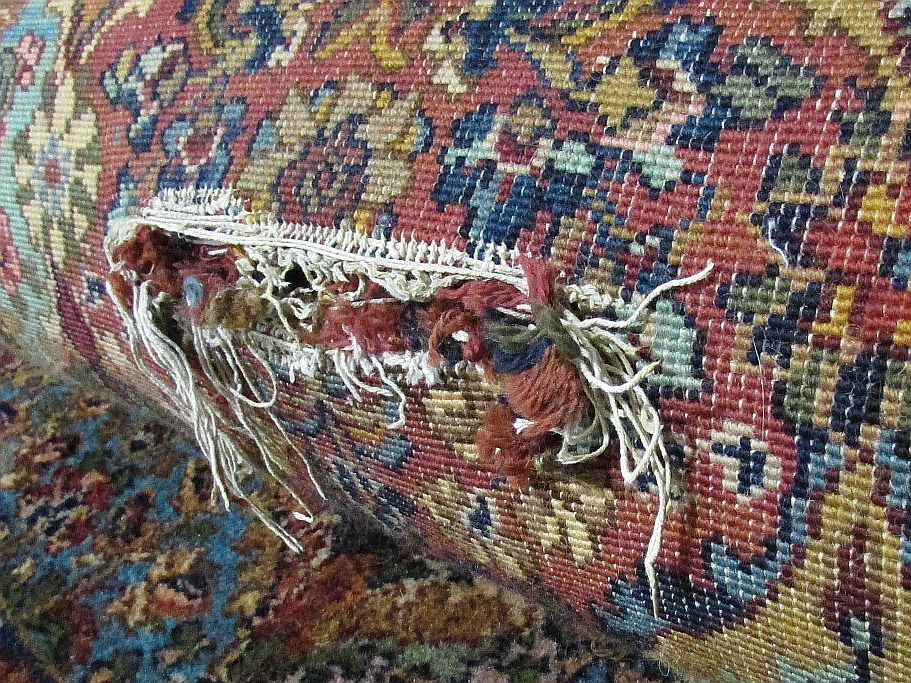Dry Rot
We previously offered a few words about the dangers of moisture and dry rot a few newsletters ago when talking about storing your rugs. Since then, there have been heavy rains that caused some home flooding, so we are now servicing some very wet rugs. We know that many people try to dry their rugs out at home, since insurance coverage for groundwater intrusion isn’t common here. By day four following the flood, the rugs coming to us have a musty odor. Some clients waited until the smell was no longer bearable, and a few of the rugs that had been wet in the past were too weak to save.
We felt it was time to talk a little more about how the damage-causing fungus, called dry rot, works:
- What is dry rot?
- Why does it damage rugs?
- Steps you can take to protect your rugs.
What is dry rot?
The fungus that causes dry rot needs moisture to grow and damage plant-based fibers. Unlike other mold and mildew that need a lot of moisture, “dry rot” describes a fungus that can grow in fibers with only 20% moisture content. So it doesn’t grow in dry fibers, just less wet fibers.
Mold and mildew spores will generally begin growth in their preferred food source after 3 days of continued high humidity and temperature between 60 and 80 degrees. While growing, the fungus that is a concern for rug owners breaks down cellulose fiber, leading to a loss of strength and eventually disintegration. Sometimes the damage doesn’t happen from a big flood and being wet for days, it can happen from being repeatedly exposed to moisture from a tiny amount of water.
Why does dry rot damage rugs?
There are a small percentage of rugs made entirely from plant fibers (jute, hemp, cotton, viscose/rayon), many of which will be permanently stained by water, so moisture damage is usually very apparent. Many area rugs will have wool or synthetic face fiber and a cotton or jute foundation, and in these rugs the plant fiber – and potential moisture damage – is hidden. When those fibers get wet, fungal growth can begin. As the rug dries out the mold goes dormant, and every time the humidity level gets high enough the mold starts growing again.
One of the great things about a wool rug can also be a downside if it has a plant fiber foundation (i.e. cotton). There may be no clue that a rug is getting damp because wool retains moisture without feeling wet. Since wool and other carpet face fibers aren’t damaged by these fungi there may not be visible signs of damage. Sometimes we only discover dry rot damage when the rug makes a “crackling” sound when rolled, and sometimes when discoloration is visible on the back. Often, the only clue is a musty odor.
(The reason for using cotton or jute in the foundation of a rug is to add ”body” or stiffness. Both wool and synthetic fibers have a tendency to stretch, so a plant fiber foundation keeps the rug from stretching out of shape and keeps it lying flat.)
Keeping your rugs safe.
Keep them dry. If your rugs get wet, dry them quickly. This may sound simpler than it is:
Flooded Rugs
When a rug gets fully wet from a flood, the drying process needs to start as soon as the water recedes. If you want to try drying your rug yourself, the first thing to do is roll the rug and prop the roll up so one end is higher. More water will drain than if the rug is left flat on the floor. Remove the rug from the wet area.
If the rug is fairly thin or is mostly synthetic, you may be able to get it dry just by laying it back out in a warm and dry area and setting fans to keep air moving across the nap.
Heavier bodied rugs and hand-knotted Oriental rugs will require a more involved air-moving procedure. We’d recommend renting commercial air movers (of the type used by restoration contractors) and placing one so that it blows under the rug. Monitor the drying closely, if the rug isn’t dry after 48 hours it should probably be brought to us to avoid the possibility of fungus-related damage.
Rugs In Use
A small, continuous supply of water is the sneaky cause of much hidden damage. A potted plant with no space between the rug and the bottom of the planter can cause enough humidity build-up to allow mildew growth. Since the face fiber isn’t damaged, there’s no warning that a perfect planter-sized section can fall out of the rug the next time it’s rolled.
Leaky basement walls, radiators, humidifiers, aquariums, plumbing or hot water heaters can wet an area behind furniture. If something above a rug traps the normal moisture rising from a concrete floor, there can be mildew growth in that area. Investigate a musty odor; it usually means there’s enough moisture to promote fungal growth.
Storage
Some of the more serious dry rot damage we see is related to rug storage. Wrapping a rug in plastic can cause trapped humidity, as can storing in an outbuilding or a non-temperature controlled storage locker. Storing a rug directly in contact with a concrete floor will allow the rug to trap moisture and increase the odds of dry rot damage. If a rug has to be stored on a concrete floor, put heavy plastic down first, and use some plywood or a few 2x4s to insulate it from the floor.
How we can help?
D. A. Burns has the capability to quickly get a wet rug clean, dry and sanitary. If the rug is already generating a musty odor, we can saturate it with an anti-fungal solution that will kill the fungus. Residues of both fungus and anti-fungal treatment will be rinsed away during the wash process, and high temperature drying will help eliminate any other micro-organisms.
Even though microbial growth can be stopped, nothing can be done to make damaged fibers regain their strength. However, there are repairs that can save your rug. If the face fiber is still intact, the rug back can be coated with adhesive and a secondary backing attached. This backing fabric takes over for the now weakened rug foundation yarns. If pieces of the rug have been lost, we may still be able to save the rug by cutting it down or reweaving the area of missing face yarn.
If you smell a musty odor, or your rug crackles when you move it, it may be telling you there’s a problem. Pay attention and you’ll avoid damage and potentially expensive repairs.
No sign of damage from the front.
The front of this rug shows no damage. The jute-fiber back shows water marks, a little dye bleeding and a trace of mildew in the shape of the file cabinet that sat above this area.
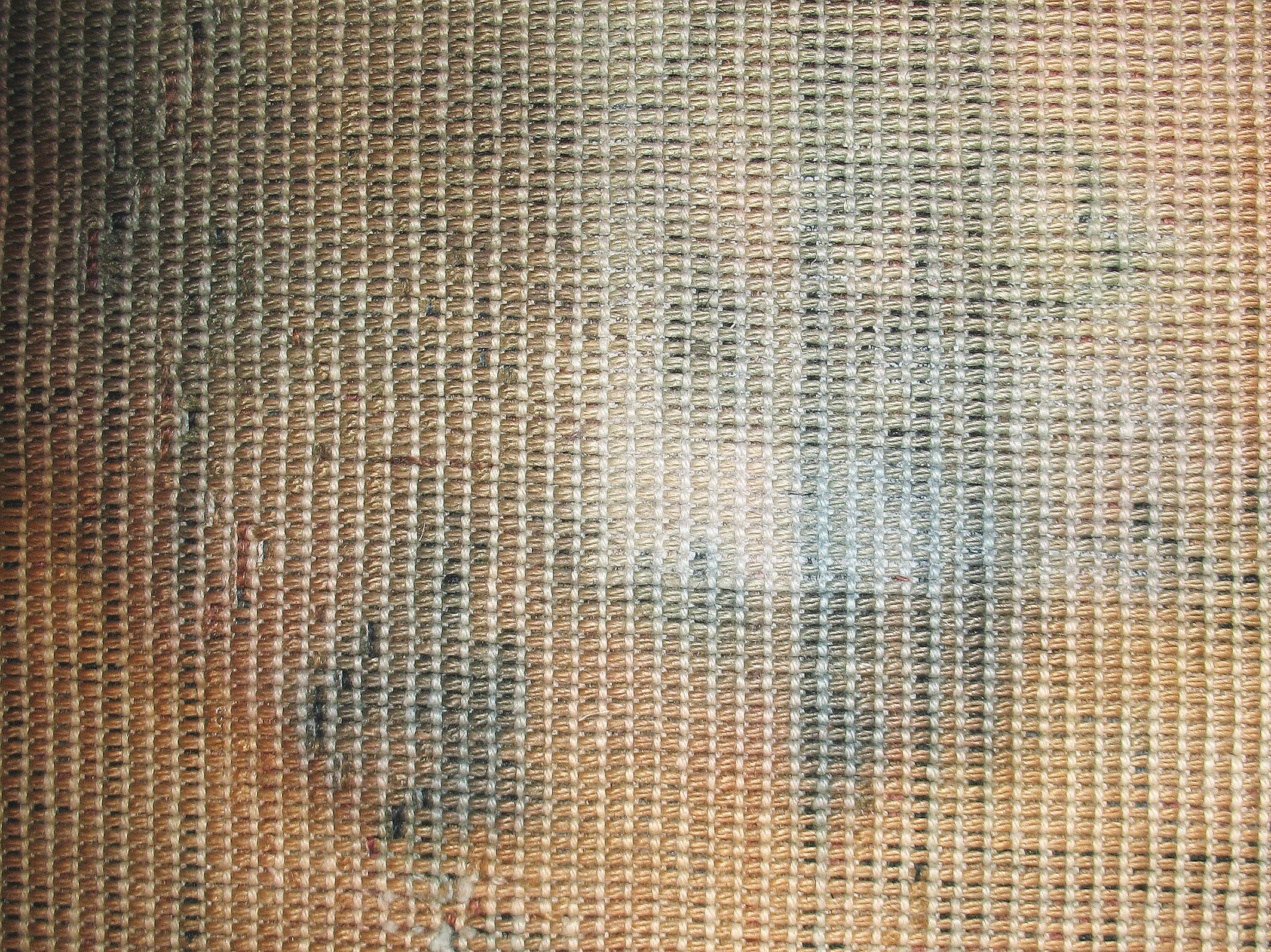
Hidden damage.
This Chinese rug has no visible sign of damage, front or back, before being moved.
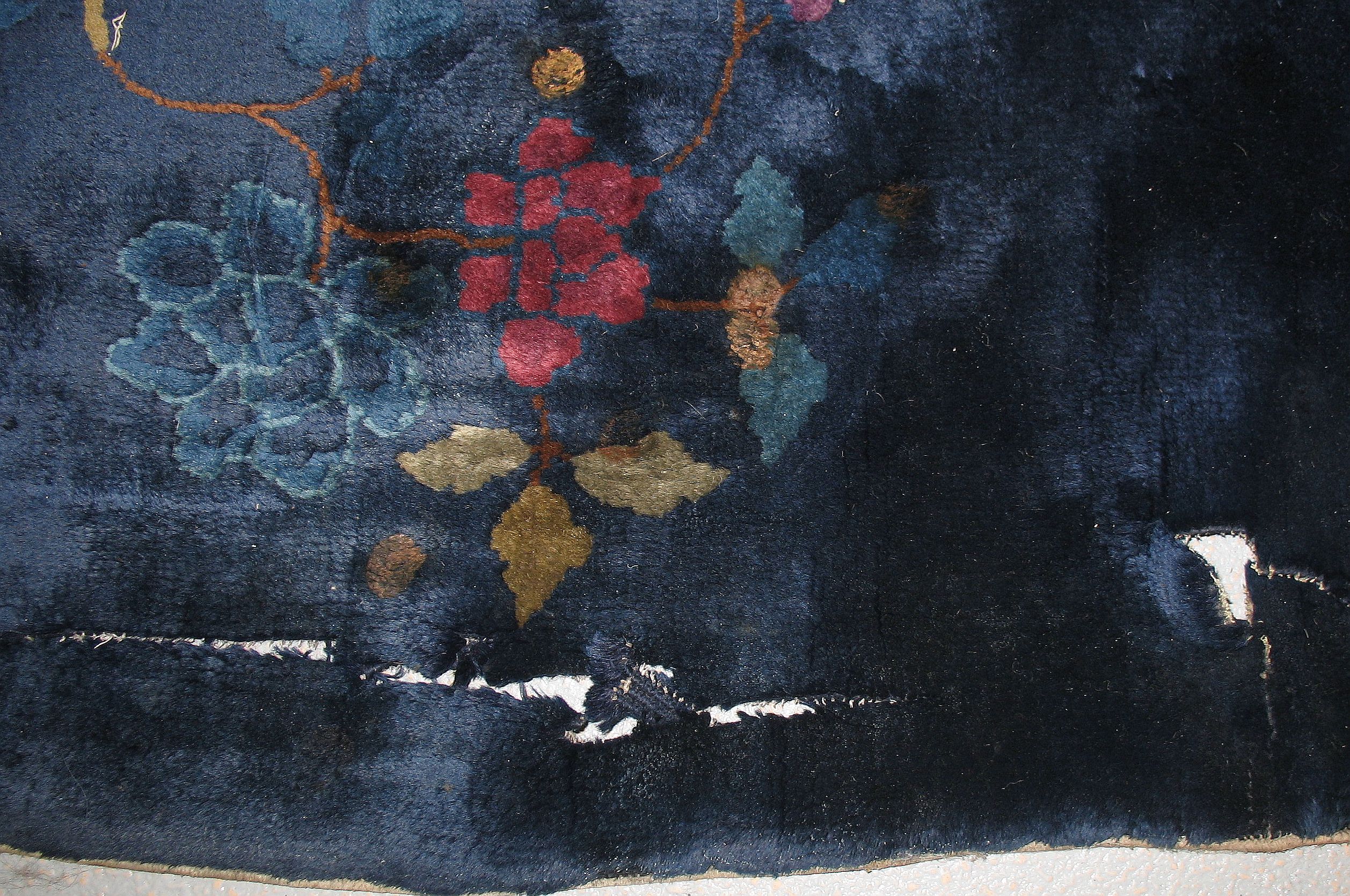
Both of these rugs were too badly damaged to invest in repair. They are being allowed to decompose the rest of the way.
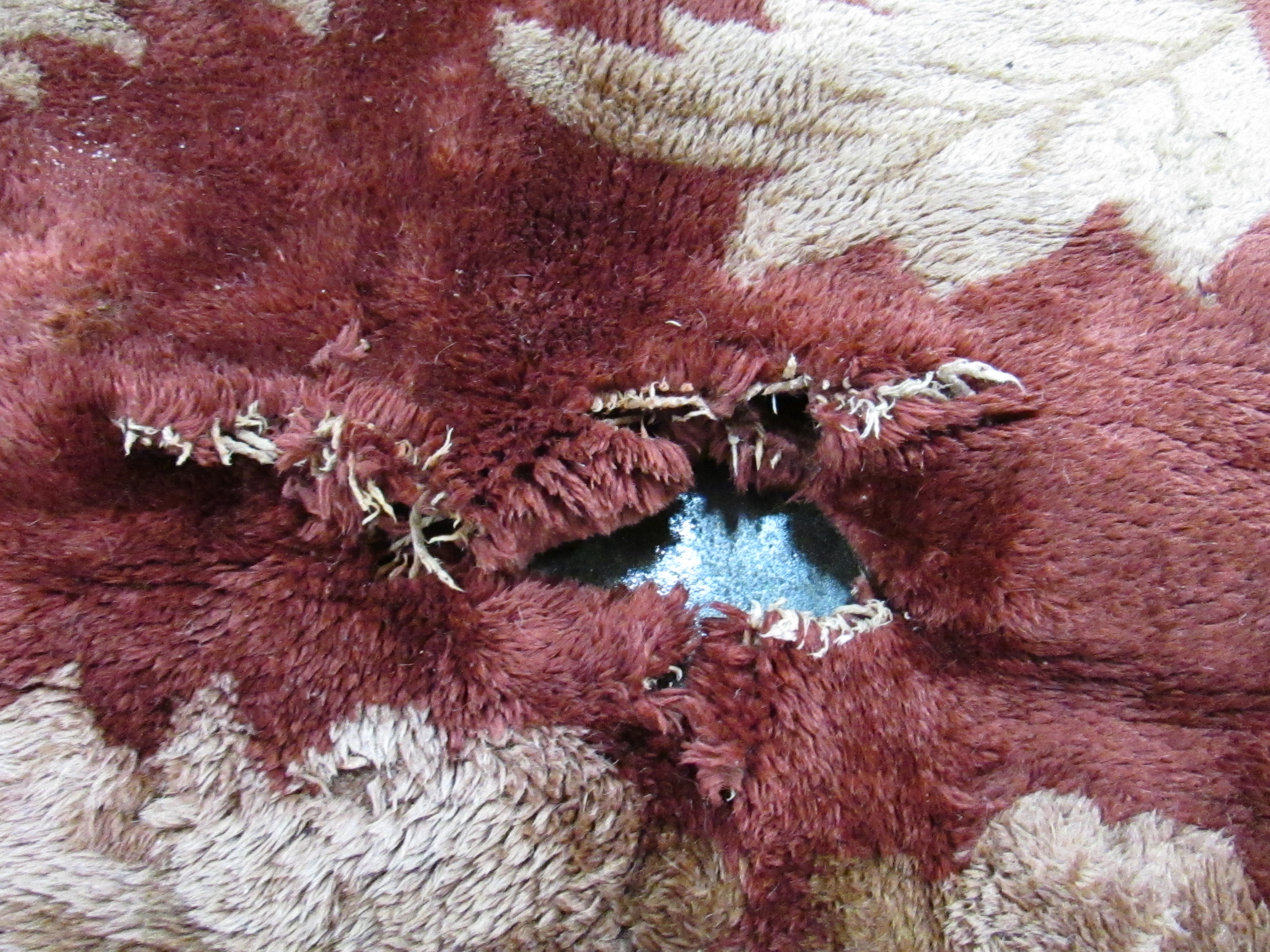
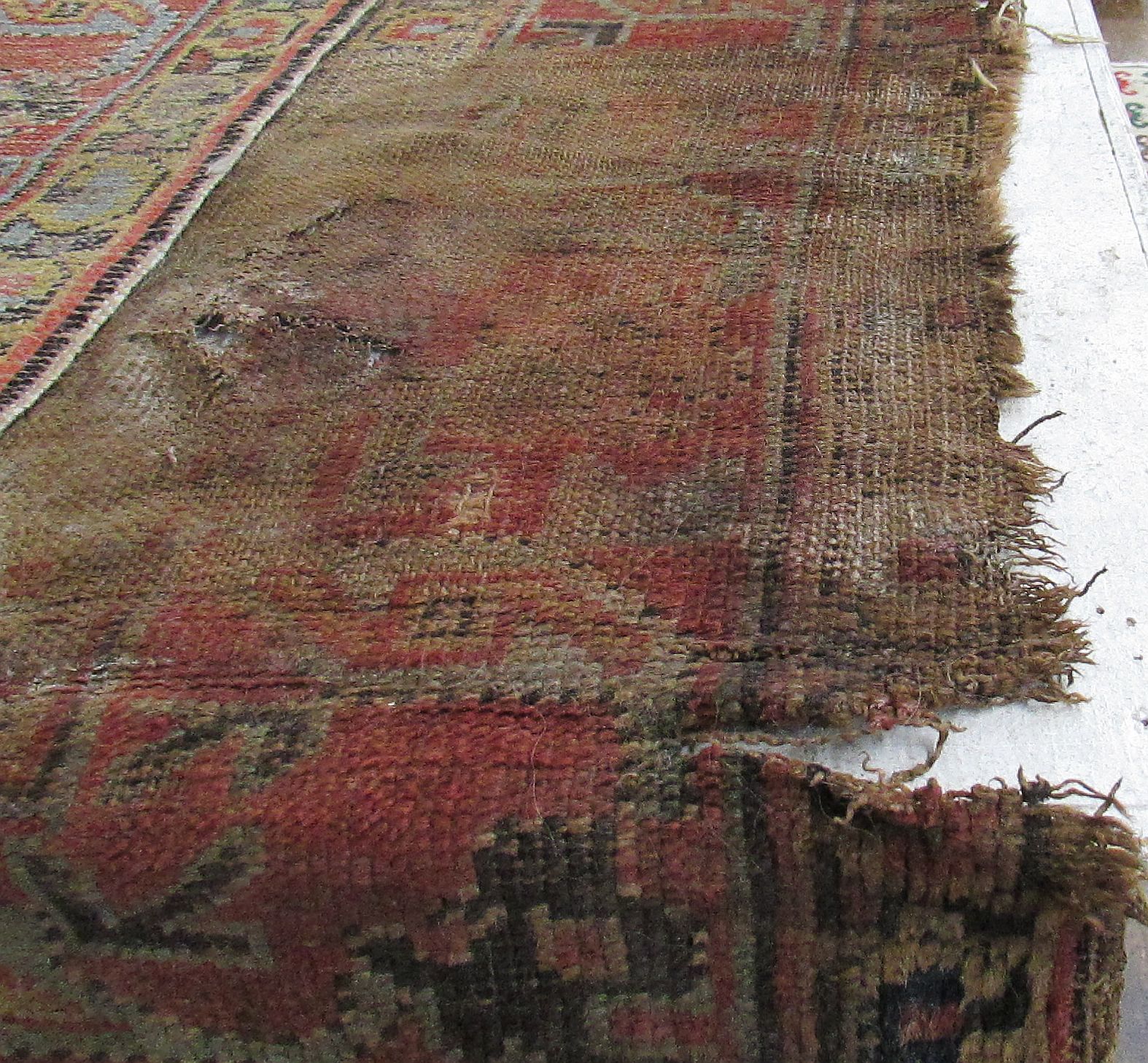
Hidden damage.
The cotton foundation fiber of this rug doesn’t look weak. The wool looks great as well, from both the front and back. There is about a three-foot diameter section around this hole that you can easily poke a finger through. We saved this Karastan American Oriental rug by inserting a section taken from another Karastan remnant and reinforcing the area with a backing fabric.
